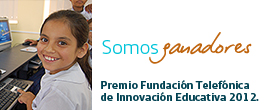Do you know? is our own television serie in which students explore interesting facts from every city across the globe or about every topic that they can be interested in. Do you Know? é o noso propio programa televisivo no que os alumnos exploran feiros interesantes de calquera cidade do mundo ou sobre calquera asunto... Seguir lendo →
Hogwarts Mission 1 : Our school leaflet
Hogwarts Mission 1 in Level 6 is over. Although it was a long hard task, the final leaflets were awesome. A nosa primeira misión en 6° está rematada. A pesares de que nos levou o seu, os folletos finais quedaron xenial. This time, our work plan promoted both individual and group work. The main goal... Seguir lendo →
WELCOME TO HOGWARTS ESCAPE ROOM 6
Congrats! You are about to become powerful wizards. Before going to King's Cross Station, please go to Diagon Alley to pick all neccessary books and equipment. If you want to enter, you will have to demostrate how good at English you are and find the lock code to open the brick wall. Hagrid is waiting... Seguir lendo →
Simple Past Tense step by step (II)
In this 2nd lesson we will learn how to make negative sentences in SIMPLE PAST. https://youtu.be/9onp7LS_QEc Let's practise!
Superlative board game
Today was a funny day! Students in Level 6 were practising the superlative form of adjectives and How+adjective questions with a workgroup board game. MATERIALS The players need one board and one set of cards for each group of three or four students; a fact file; counters and a dice for each group. PROCEDURE Divide... Seguir lendo →
World Mission 1 in Grade 6
World Mission 1 in Grade 6 is over. Although it was a long hard task, the final leaflets were awesome. This time our work plan promoted single and group working. The goal of this mission was not just carrying out the task, but they had to learn how to work in small groups giving their... Seguir lendo →
LARGE NUMBERS IN ENGLISH
Do you know how to read larges numbers in English? In English, s you can see, we use commas in large numbers. Commas separates large numbers into smaller pieces and each small piece has no more than three numbers in it Let's read them separately. The British tend to add “and” in large numbers between... Seguir lendo →
Writing dates in English
We write the date in English in different ways. The most common way in British English is to write the day of the month first (ordinal numbers), then the month (starting with a capital letter) and then the year: 7th September, 2021 *You can write first the day of the week. Monday, 1st December, 1997... Seguir lendo →
𝘼𝙇𝙇 𝘼𝘽𝙊𝙐𝙏 𝙈𝙀 𝙎𝙐𝙄𝙏𝘾𝘼𝙎𝙀
All about me is a classsical and perfect resource to kick off a new school year. If you have a new group of students and you don’t know them yet, this activity is a good way to learn each other (my family, my hobbies, my skills, my class, my teacher and grade, my favourites, etc..). Furthermore, another goal beside it... Seguir lendo →
Marvellous myths
We are going to start a new unit in Level 6 about myths and superheroes, Let's learn and practise the new vocabulary. Word quest myths from María Abilleira Pomar on Vimeo. And now, have fun with this quizlet!!!
The origins of Halloween
Halloween was originally a Celtic festival, celebrated in the British Isles, called Samhain. The Celts believed that on the last night of October the souls of the dead visited the earth. The Romans adopted the festival too and it spread. When the Catholic church began celebrating All Soul's Day on the first of November, the... Seguir lendo →
Focus on grammar Level 6
This video describes the correct usage of “Like + ing” with some specific examples. It also expresses the precise use of ‘love’, ‘like’, and ‘hate’ to say how we feel about something or about an activity. Please, copy the remembers in your notebooks https://www.youtube.com/embed/uVxn7zX8apA And now, let's practise this dialogue at home. https://soundcloud.com/mariaabilleira/pista-15




























